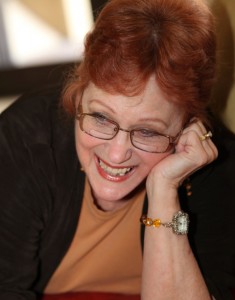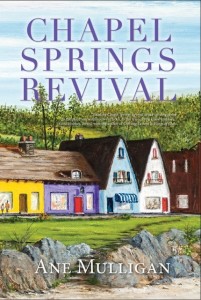While a large, floppy straw hat is her favorite, Ane Mulligan has worn many different ones: hairdresser, legislative affairs director (that’s a fancy name for a lobbyist), drama director, playwright, humor columnist, and novelist. Her lifetime experience provides a plethora of fodder for her Southern-fried fiction. She is President of the award-winning literary site, Novel Rocket, and firmly believes coffee and chocolate are two of the four major food groups. Ane is giving away a copy of her book to someone who leaves a comment.
Mulligan has worn many different ones: hairdresser, legislative affairs director (that’s a fancy name for a lobbyist), drama director, playwright, humor columnist, and novelist. Her lifetime experience provides a plethora of fodder for her Southern-fried fiction. She is President of the award-winning literary site, Novel Rocket, and firmly believes coffee and chocolate are two of the four major food groups. Ane is giving away a copy of her book to someone who leaves a comment.
What’s the Deal with Back Story?
Contrary to popular belief, backstory is a good thing. Now, before y’all call for a lynching party, let me tell you what it’s good for and what it’s not good for. After all, backstory helps you, the author know your character. What makes her tick? What formed her worldview? Why does he dislike women who have a good business head?
Let’s get the “not” out of the way first. The reader does not need to know the backstory of your characters to understand the plot—at least not in the beginning. A bit of mystery about the character is a good thing. It draws the reader onward to find out why this otherwise nice guy is so antagonistic to the heroine.
I always tell new writers to think of it this way. You’re attending a party, and your host introduces you to a new neighbor. You start off the conversation by telling her your life history, and the new neighbor will be in jeopardy of whiplash, looking for the host—or anyone for that matter—to rescue her.
Readers who are bombarded with backstory in the first few chapters of a novel with either skip over it or close the book for good. Either way, putting it in wasted your time.
Now, let’s look at what backstory is good for and how to discover it. First, I conduct a character interview (CI). Think of that as a journalist interviewing a subject for an article. In my CI, I dig and prod for the character’s secrets and for his or her fears. What happened in their childhood that had a major effect of them?
After I’ve completed the CI, I write a stream of consciousness (SOC) backstory. This is where I go back two or more generations. People are the product of their ancestors’ worldview. For example, let’s say your great grandparents lived through the Great Depression. They probably could get more for a quarter than anyone you know. They taught your grandparents, who taught your parents. But did your parents continue that trait or did they, because of their more affluent status, break away from it?
It’s within the SOC backstory where I discover so much about my character. Besides their worldview, I learn the lie they believe about themselves, and that lie will color their motivation, and that motivation will drive their plotline.
Your characters will either fall victim to their lie or they will try to prove it wrong. Remember, the key is: Lie drives motivation drives plotline.
Much of what I learn never makes it into the manuscript, but it makes the characters come alive. They’re three-dimensional and when they are real to you, the author, they become real to the reader.
One of my beta readers said after reading Chapel Springs Revival, “I love the people. I want to find out more about their lives.”
And that’s the goal for backstory.
 With a friend like Claire, you need a gurney, a mop, and a guardian angel.
With a friend like Claire, you need a gurney, a mop, and a guardian angel.
Everybody in the small town of Chapel Springs, Georgia, knows best friends Claire and Patsy. It’s impossible not to, what with Claire’s zany antics and Patsy’s self-appointed mission to keep her friend out of trouble. And trouble abounds. Chapel Springs has grown dilapidated and the tourist trade has slackened. With their livelihoods threatened, they join forces to revitalize the town. No one could have guessed the real issue needing restoration is personal.
With their marriages in as much disarray as the town, Claire and Patsy embark on a mission of mishaps and miscommunication, determined to restore warmth to Chapel Springs —and their lives. That is if they can convince their husbands and the town council, led by two curmudgeons who would prefer to see Chapel Springs left in the fifties and closed to traffic.
JIM: Ane is giving away a copy of her book to someone who leaves a comment. It can be either paperback or e-pub if the winner lives in the U.S., or e-pub if outside the U.S., so leave her a comment. Thanks.
You can find Ane on her Southern-fried Fiction website, Google+, Facebook, Goodreads, Twitter, and Pinterest.

Darlene Jones is the winner of a copy of my book! If you’ll email me at ane [at] anemulligan [dot] com and let me know if you prefer an e-book or a print copy, and if it’s a print copy, please send me your mailing address.
Hi Ane: I’ve read many of your articles on writing and find them easy to understand. I enjoy backstory as a reader. Thank you. I would love to read Chapel Springs. God bless.
Thank you, Diane! I’m so pleased they’re easy to understand. I’m a bit thick between the ears when it comes to learning, so I try to re-explain the way I learn. I’m glad to know it works! :o) Good luck in the drawing.
Wonderful information on back story. I like the way you present it. Truly if we get too deep in back story the reader will lose the story itself. Great direction. I need to save this!
Thanks, Kelly. I’m glad you get it!! Thanks for stopping by. 🙂
I read a romance novel a while back – can’t remember the title – but I do remember that the author did a great job. She started the story with a bang and wove back story through out the novel so that the reader got the information needed when it was needed.
And that’s how it should be done! Thanks for stopping by, Darlene.
Love the party illustration, Ane. And your book sounds like great fun!
Thank you, Mary! Hey, I’ve been in those party situations. LOL So when I began to write, I realized how similar backstory presented all up front could be.
Great blog today! I’m happy someone finally stepped up to the plate regarding the importance of back story. Timing is everything when it’s revealed, but it serves a strong purpose in writing. Thanks guy!
I’m glad you appreciate it, Chris. I try to tell new writers to pace what they reveal of the character’s backstory. Leave some mystery about them to draw the reader on, as they try to understand the character. 🙂
Glad to have you on, Ane. And backstory is something writers often have trouble with. So, your post is a big help. Thanks for sharing.
Jim, thank you for the opportunity to share with your readers. I really appreciate it.